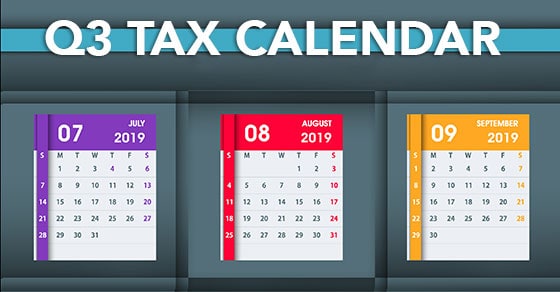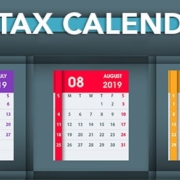When President Trump signed into law the Tax Cuts and Jobs Act (TCJA) in December 2017, much was made of the dramatic cut in corporate tax rates. But the TCJA also includes a generous deduction for smaller businesses that operate as pass-through entities, with income that is “passed through” to owners and taxed as individual income.
The IRS issued proposed regulations for the qualified business income (QBI), or Section 199A, deduction in August 2018. Now, it has released final regulations and additional guidance, just before the first tax season in which taxpayers can claim the deduction. Among other things, the guidance provides clarity on who qualifies for the QBI deduction and how to calculate the deduction amount.
QBI deduction in action
The QBI deduction generally allows partnerships, limited liability companies, S corporations and sole proprietorships to deduct up to 20% of QBI received. QBI is the net amount of income, gains, deductions and losses (excluding reasonable compensation, certain investment items and payments to partners) for services rendered. The calculation is performed for each qualified business and aggregated. (If the net amount is below zero, it’s treated as a loss for the following year, reducing that year’s QBI deduction.)
If a taxpayer’s taxable income exceeds $157,500 for single filers or $315,000 for joint filers, a wage limit begins phasing in. Under the limit, the deduction can’t exceed the greater of 1) 50% of the business’s W-2 wages or 2) 25% of the W-2 wages plus 2.5% of the unadjusted basis immediately after acquisition (UBIA) of qualified business property (QBP).
For a partnership or S corporation, each partner or shareholder is treated as having paid W-2 wages for the tax year in an amount equal to his or her allocable share of the W-2 wages paid by the entity for the tax year. The UBIA of qualified property generally is the purchase price of tangible depreciable property held at the end of the tax year.
The application of the limit is phased in for individuals with taxable income exceeding the threshold amount, over the next $100,000 of taxable income for married individuals filing jointly or the next $50,000 for single filers. The limit phases in completely when taxable income exceeds $415,000 for joint filers and $207,500 for single filers.
The amount of the deduction generally can’t exceed 20% of the taxable income less any net capital gains. So, for example, let’s say a married couple owns a business. If their QBI with no net capital gains is $400,000 and their taxable income is $300,000, the deduction is limited to 20% of $300,000, or $60,000.
The QBI deduction is further limited for specified service trades or businesses (SSTBs). SSTBs include, among others, businesses involving law, financial, health, brokerage and consulting services, as well as any business (other than engineering and architecture) where the principal asset is the reputation or skill of an employee or owner. The QBI deduction for SSTBs begins to phase out at $315,000 in taxable income for married taxpayers filing jointly and $157,500 for single filers, and phase out completely at $415,000 and $207,500, respectively (the same thresholds at which the wage limit phases in).
The QBI deduction applies to taxable income and doesn’t come into play when computing adjusted gross income (AGI). It’s available to taxpayers who itemize deductions, as well as those who don’t itemize, and to those paying the alternative minimum tax.
Rental real estate owners
One of the lingering questions related to the QBI deduction was whether it was available for owners of rental real estate. The latest guidance (found in IRS Notice 2019-07) includes a proposed safe harbor that allows certain real estate enterprises to qualify as a business for purposes of the deduction. Taxpayers can rely on the safe harbor until a final rule is issued.
Generally, individuals and entities that own rental real estate directly or through disregarded entities (entities that aren’t considered separate from their owners for income tax purposes, such as single-member LLCs) can claim the deduction if:
- Separate books and records are kept for each rental real estate enterprise,
- For taxable years through 2022, at least 250 hours of services are performed each year for the enterprise, and
- For tax years after 2018, the taxpayer maintains contemporaneous records showing the hours of all services performed, the services performed, the dates they were performed and who performed them.
The 250 hours of services may be performed by owners, employees or contractors. Time spent on maintenance, repairs, rent collection, expense payment, provision of services to tenants and rental efforts counts toward the 250 hours. Investment-related activities, such as arranging financing, procuring property and reviewing financial statements, do not.
Be aware that rental real estate used by a taxpayer as a residence for any part of the year isn’t eligible for the safe harbor.
This safe harbor also isn’t available for property leased under a triple net lease that requires the tenant to pay all or some of the real estate taxes, maintenance, and building insurance and fees, or for property used by the taxpayer as a residence for any part of the year.
Aggregation of multiple businesses
It’s not unusual for small business owners to operate more than one business. The proposed regs include rules allowing an individual to aggregate multiple businesses that are owned and operated as part of a larger, integrated business for purposes of the W-2 wages and UBIA of qualified property limitations, thereby maximizing the deduction. The final regs retain these rules with some modifications.
For example, the proposed rules allow a taxpayer to aggregate trades or businesses based on a 50% ownership test, which must be maintained for a majority of the taxable year. The final regulations clarify that the majority of the taxable year must include the last day of the taxable year.
The final regs also allow a “relevant pass-through entity” — such as a partnership or S corporation — to aggregate businesses it operates directly or through lower-tier pass-through entities to calculate its QBI deduction, assuming it meets the ownership test and other tests. (The proposed regs allow these entities to aggregate only at the individual-owner level.) Where aggregation is chosen, the entity and its owners must report the combined QBI, wages and UBIA of qualified property figures.
A taxpayer who doesn’t aggregate in one year can still choose to do so in a future year. Once aggregation is chosen, though, the taxpayer must continue to aggregate in future years unless there’s a significant change in circumstances.
The final regs generally don’t allow an initial aggregation of businesses to be done on an amended return, but the IRS recognizes that many taxpayers may be unaware of the aggregation rules when filing their 2018 tax returns. Therefore, it will permit taxpayers to make initial aggregations on amended returns for 2018.
UBIA in qualified property
The final regs also make some changes regarding the determination of UBIA in qualified property. The proposed regs adjust UBIA for nonrecognition transactions (where the entity doesn’t recognize a gain or loss on a contribution in exchange for an interest or share), like-kind exchanges and involuntary conversions.
Under the final regs, UBIA of qualified property generally remains unadjusted as a result of these transactions. Property contributed to a partnership or S corporation in a nonrecognition transaction usually will retain its UBIA on the date it was first placed in service by the contributing partner or shareholder. The UBIA of property received in a like-kind exchange is generally the same as the UBIA of the relinquished property. The same rule applies for property acquired as part of an involuntary conversion.
SSTB limitations
Many of the comments the IRS received after publishing the proposed regs sought further guidance on whether specific types of businesses are SSTBs. The IRS, however, found such analysis beyond the scope of the new guidance. It pointed out that the determination of whether a particular business is an SSTB often depends on its individual facts and circumstances.
Nonetheless, the IRS did establish rules regarding certain kinds of businesses. For example, it states that veterinarians provide health services (which means that they’re subject to the SSTB limits), but real estate and insurance agents and brokers don’t provide brokerage services (so they aren’t subject to the limits).
The final regs retain the proposed rule limiting the meaning of the “reputation or skill” clause, also known as the “catch-all.” The clause applies only to cases where an individual or a relevant pass-through entity is engaged in the business of receiving income from endorsements, the licensing of an individual’s likeness or features, or appearance fees.
The IRS also uses the final regs to put a lid on the so-called “crack and pack” strategy, which has been floated as a way to minimize the negative impact of the SSTB limit. The strategy would have allowed entities to split their non-SSTB components into separate entities that charged the SSTBs fees.
The proposed regs generally treat a business that provides more than 80% of its property or services to an SSTB as an SSTB if the businesses share more than 50% common ownership. The final regs eliminate the 80% rule. As a result, when a business provides property or services to an STTB with 50% or more common ownership, the portion of that business providing property or services to the SSTB will be treated as a separate SSTB.
The final regs also remove the “incidental to an SSTB” rule. The proposed rule requires businesses with at least 50% common ownership and shared expenses with an SSTB to be considered part of the same business for purposes of the deduction if the business’s gross receipts represent 5% or less of the total combined receipts of the business and the SSTB.
Note, though, that businesses with some income that qualifies for the deduction and some that doesn’t can still separate the different activities by keeping separate books to claim the deduction on the eligible income. For example, banking activities (taking deposits, making loans) qualify for the deduction, but wealth management and similar advisory services don’t, so a financial services business could separate the bookkeeping for these functions and claim the deduction on the qualifying income.
REIT investments
The TCJA allows individuals a deduction of up to 20% of their combined qualified real estate investment trust (REIT) dividends and qualified publicly traded partnership (PTP) income, including dividends and income earned through pass-through entities. The new guidance clarifies that shareholders of mutual funds with REIT investments can apply the deduction. The IRS is still considering whether PTP investments held via mutual funds qualify.
Proceed with caution
The tax code imposes a penalty for underpayments of income tax that exceed the greater of 10% of the correct amount of tax or $5,000. But the TCJA leaves less room for error by taxpayers claiming the QBI deduction: It lowers the threshold for the underpayment penalty for such taxpayers to 5%. We can help you avoid such penalties and answer all of your questions regarding the QBI deduction.
© 2019











